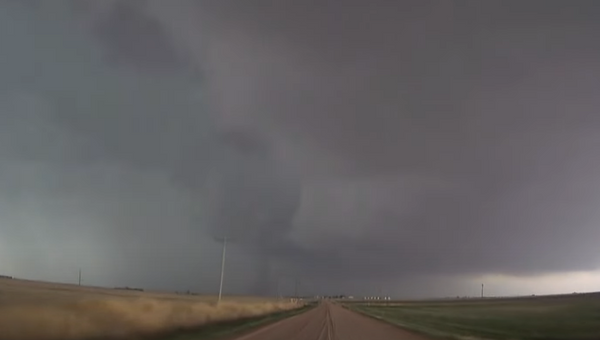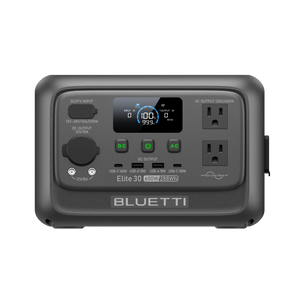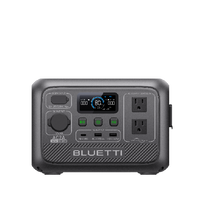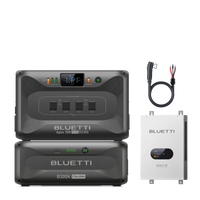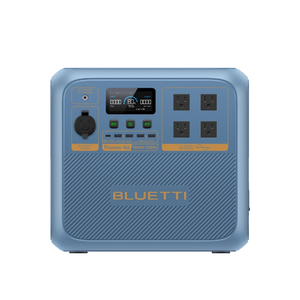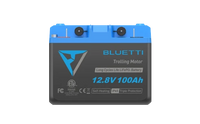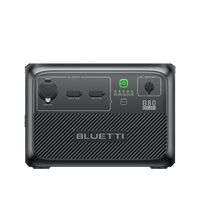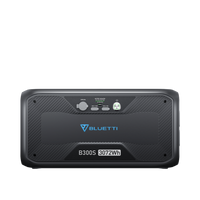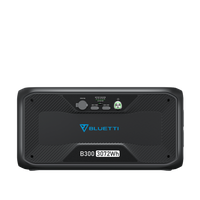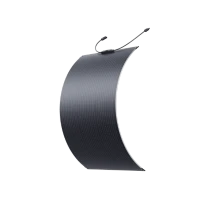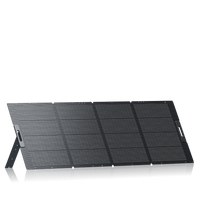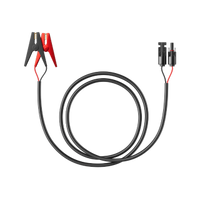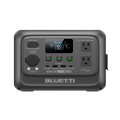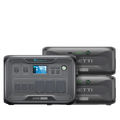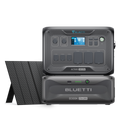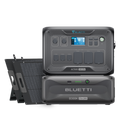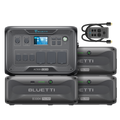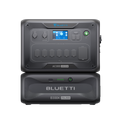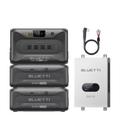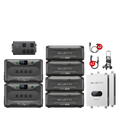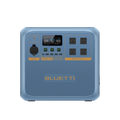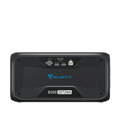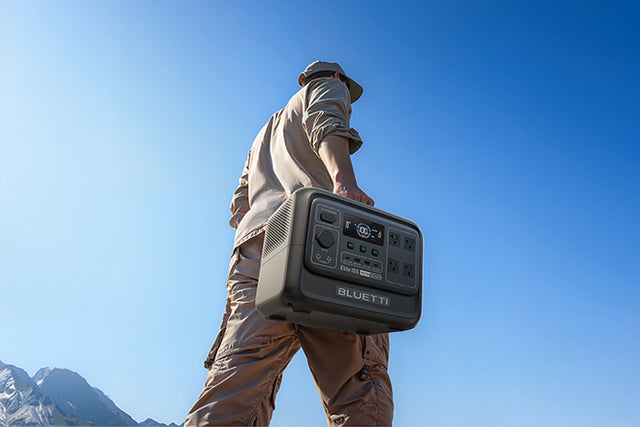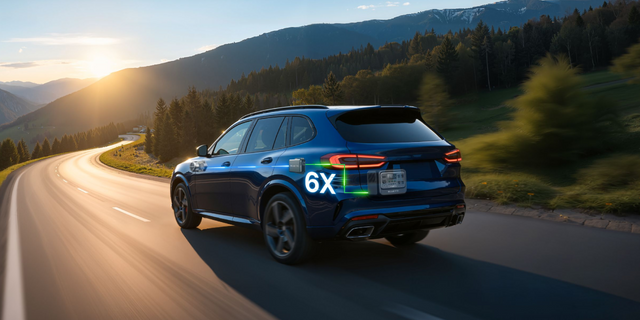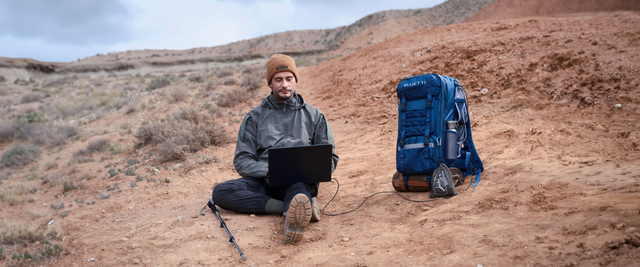Your cart is empty
Shop our productsThe world of filmmaking is dynamic, marked by constant change and evolution. Off-grid film production has been amongst the most fascinating of such recent developments, and has allowed filmmakers to break the shackles of traditional power sources and breathe life into their stories in the remotest corners of the world.
This new era of filmmaking goes hand-in-hand with the rise in mobile photography – a rapidly-developing field that leverages the portability and flexibility of modern equipment to push the parameters of cinematic storytelling.
Of course, a core concern surrounding off-grid filmmaking has to do with reliable access to power. Is there a way to power energy-intensive film equipment in these remote locations? And this is where portable solar power enters the screen, allowing us to produce clean and renewable energy by harnessing the power of the sun. Leveraging portable solar power can be a game-changer, giving producers the freedom to shoot in locations that best complement their stories.
In other words, portable solar power is far from an environmental boon; it is an enabler that allows filmmakers to explore the cinematic potential of previously unfeasible locations. The triad of off-grid film production, portable solar power, and mobile cinematography is unveiling new frontiers of filmmaking – and this blog will attempt to explore some of these exciting possibilities.
Understanding Off-Grid Film Production
Off-grid film production is a novel approach to filmmaking that deviates from conventional sources of power. Instead of using the traditional forms of electricity, off-grid filmmakers enjoy greater autonomy by utilizing alternative, renewable sources of energy to bring their visions on screen.
In essence, off-grid film production is exactly what it sounds like – film production taking place off-the-grid, beyond the confines of traditional studios, production houses, and urban locations. Off-grid locations could include subtle off-grid locales like urban villages or towns, or out-and-out remote settings like jungles or deserts.
In the last few years, off-grid film production has become both popular and significant. The film industry, like much of the world, is waking up to the realities of climate change and global warming, and is thus pushing for greener, more sustainable operations. Off-grid production slots perfectly into this ethos, allowing the industry to lower its reliance on conventional sources of power and lower its carbon footprint. The best part, however, is that, far from creating obstructions, the emphasis on sustainable sources of power has allowed filmmakers to venture into unchartered territories – both literally and figuratively – and narrate stories in a way that may not have been previously possible.
Let us discuss a couple of examples to drive the above points home. One noteworthy instance is the 2001 film, ‘Atanarjaut – The Fast Runner’. This award-winning movie was shot in the Arctic region of Canada, utilizing local resources and conducting the bulk of its operations off the grid.
A second example is the documentary, ‘Chasing Ice’, where acclaimed environmental photographer James Balog used solar-powered time-lapse lenses to capture the dynamic landscapes of the Arctic, miles away from traditional power sources.
These are just two of many examples that illustrate the importance of portable solar power as not just a sustainable source of filmmaking, but also a way to narrate extraordinary stories.
The Rise of Mobile Photography
Mobile photography is another trend marking a shift away from traditional approaches to filmmaking. It emphasizes using modern, compact equipment to maximize agility, adaptability, and convenience. At its core, mobile photography involves the use of small, mobile devices – often no more than high-quality smartphone cameras – to create cinematic content.
There are several factors that have contributed to the surge in mobile photography. For one, technological developments have allowed professional-grade cameras to be packaged in compact forms. The modern smartphone is not only equipped with high-quality cameras, but also advanced image processing tools, editing applications, and even manual control options. This level of technology, combined with the inherent portability of these devices, has allowed filmmakers to carry their craft over to new, dynamic environments without enduring high costs or inconveniences.
The democratization of filmmaking is another boon of mobile photography. Until recently, filmmaking was strictly restricted to those with access to expensive, professional equipment. Today, though, this craft is available to a far wider audience. This has leveled the playing field and allowed fresh talent to grace the industry with its creativity and unique perspectives.
There are many examples highlighting this trend, with the critically-acclaimed ‘Tangerine’ being one of the standout ones. This movie, directed by Sean Baker, was shot entirely using an iPhone 5. Similarly, the Oscar-winning director, Steven Soderberg, shot the psychological thriller ‘Unsane’ using an iPhone 7 Plus, showing what a mobile camera device can do when placed in skilled and creative hands.
The Role of Portable Solar Panels in Off-Grid Film Production

Portable solar panels play a key role in the broader narrative of off-grid film production. Far from power-generating devices, portable solar panels are portals that allow directors to enter a whole new dimension of filmmaking.
Portable solar panels use the power of the sun, converting it into electricity through photovoltaic cells. This clean and renewable energy source is vital for off-grid film production, allowing filmmakers to put up their sets literally anywhere under the sun.
There are different types and sizes of portable solar panels out there, giving filmmakers the flexibility to choose one based on the scale of the film production. More compact solar panels are ideal for lightweight film production, and can be used to power cameras, laptops, and perhaps a few lights. Larger-scale productions will necessitate the use of higher-power solar panels capable of driving more energy-intensive equipment such as monitors, lighting rigs, and sound systems.
Portable solar panels are generally connected to a power source like portable solar generators, which allows filmmakers to use energy throughout the day, as needed (more on that later). Besides, the portability of these panels also makes it easy for users to manipulate their positioning for optimal sunlight exposure.
As far as portable solar panels for film production are concerned, there is no dearth of success stories. One such story involves the movie, ‘The Ghosts in Our Machine’, where portable solar panels allowed the crew to film in faraway locations. Likewise, the adventurous climbing documentary, ‘The Dawn Wall’, made use of solar panels while capturing enthralling moments on the steep cliffs of the Yosemite National Park.
The Power of Portable Solar Generators for Mobile Filmmaking

If solar panels are the first step to leveraging sunlight for electricity, portable solar generators step things up another notch. They are key players in the filmmaking realm, particularly in mobile photography, where striking the right balance between power and portability is essential.
Portable solar generators are like compact battery packs. These packs store the extra energy produced by solar panels and make it available for use as and when needed. Along with a battery storage unit, these generators consist of an inverter responsible for converting the DC power captured by the solar panels into the usable AC form of power. Technological developments have led to these generators becoming more portable and efficient than ever before, making them sufficiently reliable and convenient for mobile photography.
Understandably, the key benefit of portable solar generator involves a steady supply of power even during times of unavailable sunlight. This can be invaluable for night shoots, during overcast conditions, and on days when sunshine is not reliable. Since these generators are capable of storing any unused power produced by the portable solar panels, they can serve as dependable backups for when solar panel use is impossible or impractical.
Most portable solar generators contain multiple ports, allowing filmmakers to power several devices at once, including cameras, lights, laptops, and sound equipment.
Once again, there are plenty of examples where portable solar generators have served as loyal allies to filmmakers. In the movie, ‘Into the Okavango’, set in the remote Okavango Delta, portable solar generators allowed the crew to capture breathtaking footage of the landscapes and wildlife despite the complete absence of traditional power sources.
The Future of Solar-Powered Film Production
The future of solar-powered filmmaking is not just promising but also exciting. This unique filmmaking approach, involving no or minimal reliance on traditional sources of power, is set to play a central role in the industry.
There are multiple reasons to be excited. Perhaps the most important of these is the brisk pace at which solar technology is advancing. Solar panels continue to become more portable, efficient, and cost-effective with each passing day, making this renewable energy more accessible than ever. There have also been significant strides in battery technology, resulting in newer models with higher capacities, shorter charging times, and longer lifespans. Thanks to these advancements, the lure of portable solar power for filmmaking is growing stronger than ever.
Next, as mentioned earlier, the growing awareness of environmental issues is serving as a catalyst for the move towards sustainable filmmaking technology. Solar power serves as one of the most direct solutions to these threats, allowing filmmakers to leverage a limitless source of power and reduce the strain on our already-overburdened finite natural resources.
We can also expect to see portable solar power in filmmaking being used more innovatively. Be it solar cell-driven drone cameras or off-grid solar-powered studios, the possibilities are only limited by our imagination.
And, of course, let us not forget the practical benefits of adopting portable solar-powered filmmaking. A renewable and reliable power source, significant cost-savings over time, and the freedom to shoot in remote locations are all incentives for filmmakers to come over to the solar side.
Cut to Solar – Portable Solar Power for Off-Grid Filmmaking

Off-grid filmmaking is the marriage between sustainability and creativity, and marks the newest episode in the fascinating story of human ingenuity and innovation. As we saw throughout this blog, the use of portable solar power, such as solar panels and generators, is not just helping to make the planet more habitable but also pushing the envelope in terms of narration and storytelling.
The pace at which this technology is developing, it is just a matter of time before solar becomes the default source of power for the film industry. However, this is about more than just technological or practical implications – it is about our relationship with the world that sustains us, and the commitment to nurturing that relationship without compromising on our craft.
To sum up, portable solar power for filmmaking is not just a flickering fad; it represents a bold step forward for the film industry, with potentially far-reaching long-term positive consequences. By merging the art of storytelling with the principles of sustainability, filmmakers are not just broadening the boundaries of storytelling and cinematography, but also laying the foundation for the environmentally-friendly future of cinema.
Shop products from this article
Be the First to Know
You May Also Like

Deadly Flooding Devastates U.S. South and Midwest — What You Need to Know

BLUETTI Teams Up with Leave No Trace to Power Sustainable Outdoor Adventures
